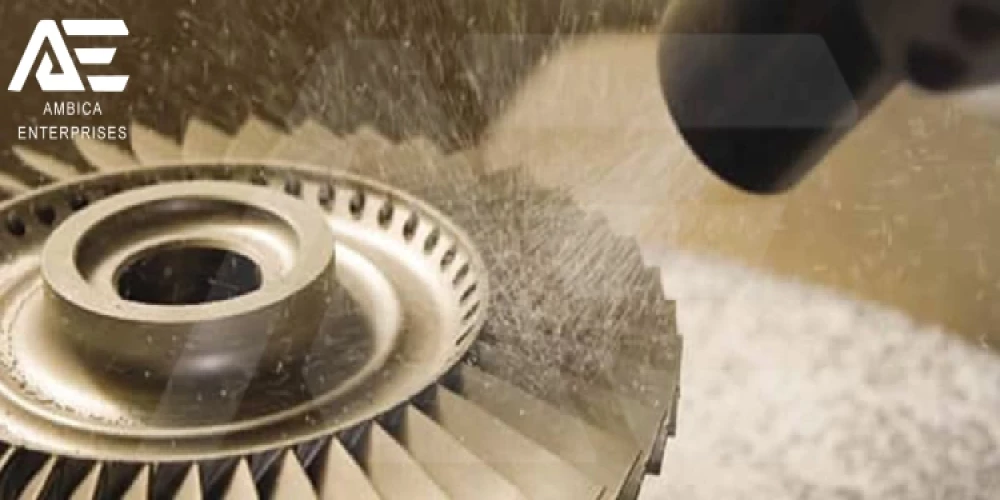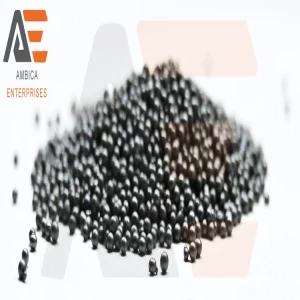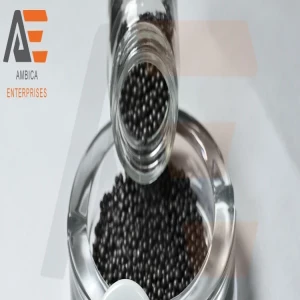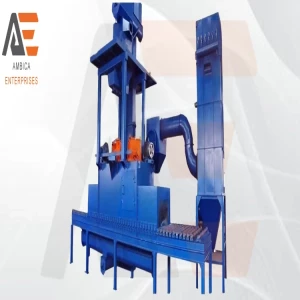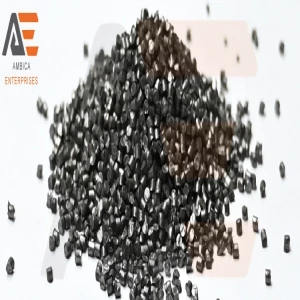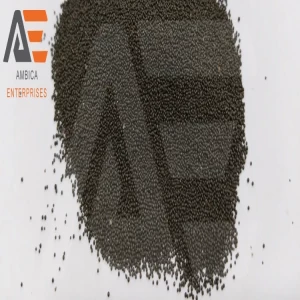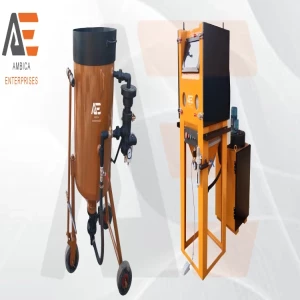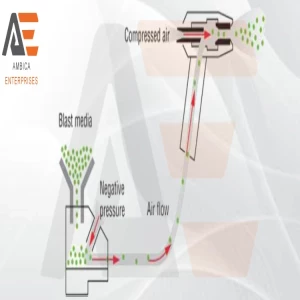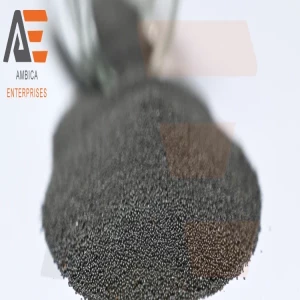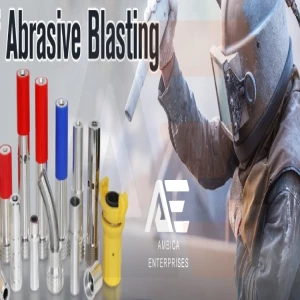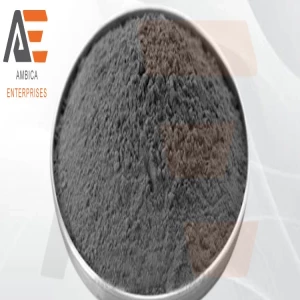Blasting is the acceleration of particles by air or mechanical means to a surface or workpiece to achieve a variety of physical effects. Surface effects are determined by media type, size, speed, and direction of impact. The visual appearance of a blasted surface tends to be dull to a bright satin-matte finish.
A number of mechanical applications are listed below:
- Pre-Paint Adhesion
- Heat Treat Scale Removal
- Pre-Plate Finishing
- Mill Scale Removal
- Surface Cleaning
- Rust Removal
- Peening For Strength
- Coating Removal
- Blending Machine Marks
- Deburring
- Deflashing Plastic & Rubber
- Weld Discoloration Removal
- Glass Etching
- Mold Cleaning
All Recoverable Blast Systems, Cabinets, or Rooms consist of:
- Delivery System
- Containment System
- Media Reclaiming - Cleaning System
Blasting Types
Pneumatic Blasting
Pneumatic blasting uses an air compressor to accelerate an air stream combined with media onto a workpiece. There are two types used to accelerate the air;
- Suction and
- Pressure
Suction Blasting:
The Suction Blast System uses the venture principal, incorporating an air jet one half the inside diameter of the sand blasting nozzle. This creates a negative pressure that sucks the media into the gun body from the hopper. The total
acceleration of the media in the air stream is 8 to 16". A Suction Blast System can operate continuously without shutdowns to refill media and can be easily automated with multiple gun bodies.
Pressure Blasting:
Pressure Systems utilize a pressure pot that when pressurized with media in the pot, accelerates the media from the pot through the blast hose to the nozzle. The total media acceleration distance of 6' and greater
generates a velocity of 250 fps. By applying basic physics, (impact energy = 1/2 mass X velocity squared) it becomes apparent that pressure systems are highly efficient. When the mass of the media is doubled, the
kinetic energy is doubled. When the velocity of the media is doubled, the kinetic energy is quadrupled.
Blast production rates are higher with pressure systems than with suction. Some variables that will affect production rates are blast media type, size, quantity, blast pressure, distance, and the angle of the blast stream in relation to the workpiece and operator experience.
Airless ( mechanical wheel ) Blasting:
This type of blast system delivers media by means of a mechanical wheel which propels the media at the workpiece. Airless blasting lends itself to automation with single or multiple wheels positioned to cover various sizes and types of parts.
A very common media used in this system is steel shot or grit. Blast pattern, operation mix, and abrasive flow are very important to these systems. Below are recommendations that may help in understanding airless blasting.
1. Blasting Pattern
- Inspect wheel parts daily for wear.
* Impeller-change when segments are worn 1/8".
* Control Cage-change when the beveled edge is worn 1/4".
* Blades/Vanes-change when worn 1/2 their thickness. - Check blast-pattern (hot spot) regularly.
* Blast the test plate at normal work height for 20 to 30 seconds.
* Adjust hot spot approximately 8" in advance of wheel centerline. - 2% sand and fines in the abrasive operating mix will increase wear on wheel parts by 50%.
- Maintain records of parts replacement by wheel hours so that a preventative maintenance program can be established.
2. Operating Mix
- Add new abrasive each work shift. Keep storage hopper 1/2 to 2/3 full.
- Screen abrasive operating mix weekly.
- Add back to machine each work shift abrasive that has leaked out.
- Inspect the air wash separator each work shift.
* Scalping Screen-holes, flights, and blockage.
* Shed Plate-full abrasive curtain, holes.
* Dribble Pipe-dribble valves in working order.
* Usable abrasive in dribble pipe waste.
* Dust collector pipes-inspect for dust, abrasive build-up, and holes. - Inspect separator and dust collector baffles for proper settings and wear.
3. Abrasive Flow - Low Wheel Amps
- Clean our scalp screens each work shift.
- Inspect wheel parts daily for wear.
- Inspect abrasive fed control valve for proper abrasive flow. Excessive abrasive will flood wheel and lower wheel amps.
- Inspect for loose and missing drive belts.
- Show proper full load amps above each ammeter. Record ammeter reading each work shift.
Check ammeter calibration monthly.
Media Selection Guide:
The relationship of using the correct blast media and achieving the desired results, while maintaining cost control is very important.
Factors to consider include the effects the media will have on a surface and the actual cost, not just the initial cost. If a media costs three times as much as another, but the attrition rate is twenty times less, it becomes more economical to use. As a general rule, round media tends to impact a wide area, angular media will cut into a work surface. The heavier the media, the deeper the impact, whereas lightweight particles have less impact. Hard media will concentrate their work, and soft media will spread the effect. The table below will give a guideline on commonly used recoverable media and their applications.

